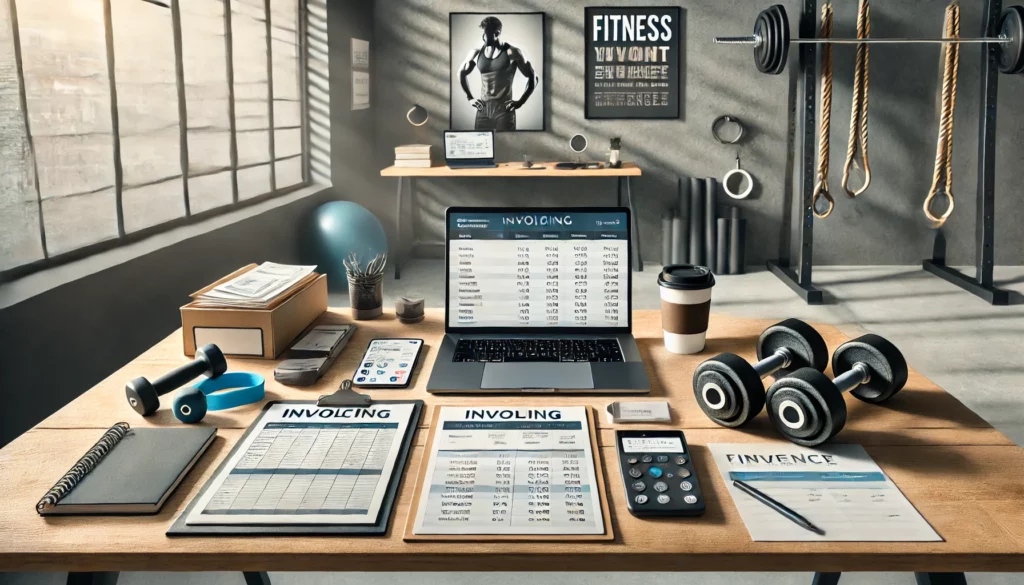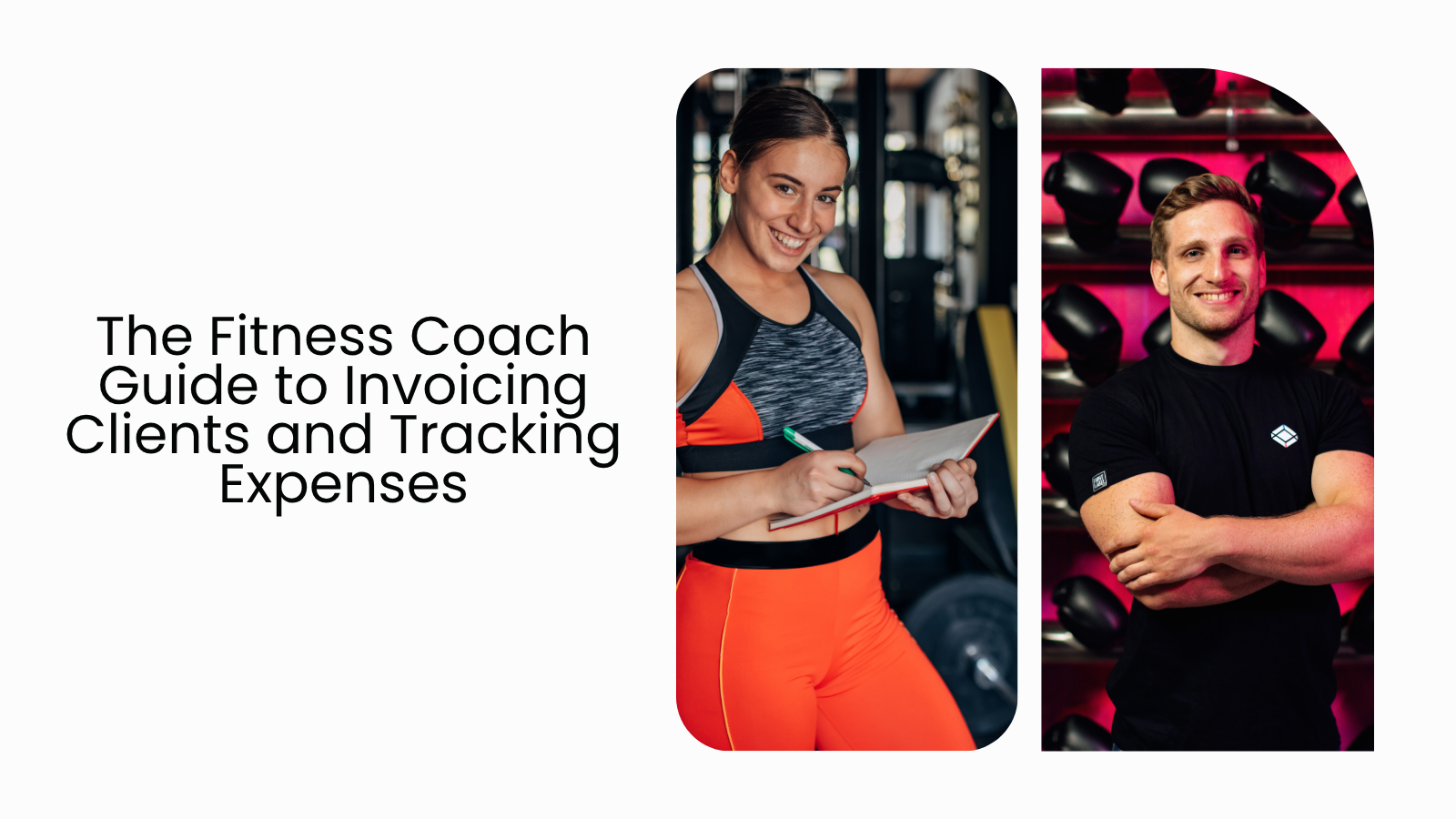The Fitness Coach Guide to Invoicing Clients and Tracking Expenses
Reading Time: 6 minutesSmart personal trainer invoicing is key to keeping that business running smoothly.
You help others get fit—but is your business financially fit? If you’re a fitness coach, personal trainer, or wellness instructor, you already know this isn’t just a hobby. It’s a full-on business.
You plan workouts, motivate clients, and maybe even run your own classes or online programs. But when it comes to money—let’s be honest—things can get messy.
Between late payments, lost receipts, and the stress of tax season, managing your money can feel harder than your toughest HIIT workout.
But it doesn’t have to be.
In this guide, we’ll discuss:
- Why Financial Fitness Matters (Yes, Even for Trainers)
- How to Invoice Fitness Clients Like a Pro (Without the Awkward Texts)
- How to Track Your Fitness Business Expenses (Without Losing Your Mind)
- Best Practices to Get Paid Faster
- Managing Your Money While Growing Your Coaching Business
- Final Words: Fitness Meets Finance — and You’re the CEO of Both
Why Financial Fitness Matters (Yes, Even for Trainers)
People think fitness coaches just do reps and post on Instagram. What they don’t see? The behind-the-scenes chaos: chasing unpaid invoices, not knowing where your money went, or dreading tax season like it’s burpee day.
But here’s the deal: if your money is all over the place, your business probably is too.
Think of Cash Flow Like Your Heartbeat
If your cash isn’t flowing, your business won’t last. Studies show that 61% of small business owners struggle with cash flow—and many don’t even realize it until it’s too late.
For coaches, that shows up as:
- – Waiting weeks to get paid
- – Forgetting to charge for a no-show or rescheduled session
- – Not tracking expenses like gas, gym fees, or that new TRX band you just bought
When your fitness business invoicing isn’t structured, money leaks become inevitable. And the more disorganized your process, the more you lose.
Tax Season Shouldn’t Be a Workout
You don’t want to spend April digging through gym bags for receipts. But without organized finances, you’ll either miss out on tax deductions or overpay the government. Neither feels good.
Fitness coaches can write off legit business stuff like gear, client travel, course fees, music apps, and more. But only if you track them.
Your Brand Is Also How You Bill
Sending a sloppy invoice or chasing payments in your DMs makes your business look… unprofessional. But when your invoice looks polished—with your name, logo, and service details—you earn trust (and faster payments).
If you’re serious about your fitness coaching business, your financial tools should look the part. Personal trainer invoicing doesn’t have to be clunky or outdated.
How to Invoice Fitness Clients Like a Pro (Without the Awkward Texts)
You crushed the session. The client is happy. Now comes the part no one likes to talk about—asking to get paid.

But invoicing doesn’t have to feel weird. With the right setup, it becomes just another smooth step in your workflow.
Here’s what your invoice should include:
- – Your name, contact info, and logo
- – What the client is paying for (e.g., “4x Personal Training Sessions – March 2025”)
- – Payment terms (e.g., “Due in 7 days”)
- – Payment options (Stripe, PayPal, bank transfer, etc.)
Set Up Recurring Invoices
If you train the same clients weekly or monthly, automate your invoicing. Akaunting’s recurring invoice feature lets you “set it and forget it” so clients get billed like clockwork—and you don’t have to chase payments.
Pro Tip: Add a thank-you message to build rapport. Example: “Thanks for trusting me with your goals! Let’s keep pushing.”
Automating your fitness business invoicing saves time and gives you a professional edge.
Check out: How Do I Create Recurring Invoices?
Make It Easy to Pay
A big reason clients don’t pay on time? The process is too hard. Akaunting connects with Stripe, PayPal, and more, so clients can pay how they want—and you can get paid faster.
Businesses that accept online payments get paid twice as fast as those that don’t.
Whether you’re handling fitness coach invoicing manually or using software, make it easy for your clients to complete the payment.
How to Track Your Fitness Business Expenses (Without Losing Your Mind)
You’re better at logging workouts than logging receipts. But if you’re not tracking your expenses, you could be losing serious money.
Every dollar you spend on your business—protein powder, workout gear, insurance, and even Spotify, if you use it in class—can reduce your tax bill. But only if you track it.
Here’s What to Keep Track Of:
| Category | Examples |
| Fitness Gear | Dumbbells, mats, resistance bands |
| Subscriptions | Zoom Pro, Canva, fitness software |
| Marketing | Website hosting, Facebook ads |
| Travel | Gas, ride shares to client sessions |
| Workspace | Home office costs, gym rental |
| Education | Certifications, workshops |
| Apparel | Branded shirts, uniforms |
For personal trainers, invoicing and expense tracking go hand in hand. Treating them as part of your routine helps you stay in control.
Best Practices to Get Paid Faster
Chasing money shouldn’t be part of your workout plan. But so many fitness coaches are doing just that—sending reminders, waiting weeks, or dealing with awkward money convos.
Here’s how to fix that:
Set Payment Terms (Before You Start)
Don’t wait until after the first session. Tell your clients how and when to pay upfront. Akaunting lets you customize terms right on the invoice: Net 7, Net 15, etc.
Also include a small late fee—5% after 7 days works great—to motivate timely payments.
Using clear payment terms is a must-do for personal trainer invoicing. It prevents confusion and sets expectations early.
Check out: Net 30 Payment Terms: What is it?
Send Friendly Reminders
People forget. Akaunting lets you automate payment reminders so you don’t have to send that “Hey, just checking on the invoice…” text yourself.
Example:
Subject: Quick reminder — your training invoice is due soon
Body: Hey [Client Name], just a friendly reminder that your invoice for this month’s sessions is due tomorrow. Let me know if you need help with anything!
Check out: How To Write an Invoice Reminder
Offer Incentives
Consider offering a small discount for early payments. Even 5% off shows appreciation and builds loyalty.
Whether you’re doing fitness business invoicing for group classes or one-on-one coaching, being proactive helps avoid delays.
Managing Your Money While Growing Your Coaching Business
You’re getting more clients. Maybe planning group classes or even dreaming of your own studio. That’s awesome—but growth can get messy if your money isn’t organized.
Here’s how to stay in financial shape while scaling up:
Know Your Burn Rate
This is how much you must spend each month to keep the lights on. That includes rent, apps, marketing, and gear. Akaunting helps you set budgets and track actual vs. expected spending.
82% of small businesses fail because of poor cash flow—not lack of customers.
Whether you’re just starting or already scaling, fitness coach invoicing and expense management should grow with you.
Keep Business and Personal Finances Separate
It’s essential to keep your personal finances distinct from your business revenue. Avoid mingling your lunch expenses with your income from coaching sessions.
To achieve this, open a dedicated business bank account where you can manage all transactions pertinent to your coaching venture.
This approach not only provides clarity but also aids in maintaining organized financial records.
Akaunting seamlessly integrates with your bank account, allowing for effortless tracking of all your financial activities. This direct connection enables you to get an accurate view of your income and expenses, ensuring that your personal trainer invoicing remains straightforward and transparent.
Use Reports to Make Smart Moves
Akaunting’s reporting tools show you:
- – Which clients bring in the most revenue
- – Which services are most profitable
- – Where you’re overspending
Make decisions based on numbers—not gut feelings.
Automate What You Can
The more you grow, the less time you have to mess with spreadsheets. Akaunting automates:
- – Recurring invoices
- – Expense tracking
- – Payment reminders
- – Financial reports
Streamline your fitness business invoicing to reduce stress and free up time.
Set Aside Money for Taxes
Taxes are a necessary responsibility that cannot be overlooked—especially when you’re self-employed, as taxes are not automatically deducted from your earnings.
To avoid financial stress come tax season, it’s advisable to set aside approximately 25–30% of each income payment you receive.
This proactive approach ensures that when April rolls around, you have sufficient funds to meet your tax liabilities without the last-minute rush or anxiety.
With Akaunting, you can effectively manage your finances by tagging your taxable income and monitoring it separately from your other earnings. This feature allows for clearer visibility of your income and helps you prepare for tax payments throughout the year.
Final Words: Fitness Meets Finance — and You’re the CEO of Both
You already know how to train hard, stay consistent, and deliver results. Now it’s time to treat your business the same way.
From pro-level fitness coach invoicing to simple expense tracking, Akaunting can help you build a financially fit business—without hiring a full-time accountant. And yes, it’s free to get started.
Ready to take control of your coaching business? Try Akaunting today.




